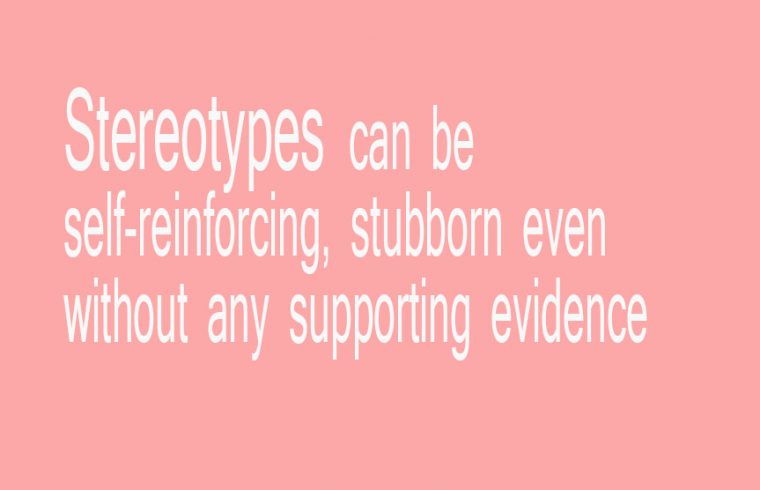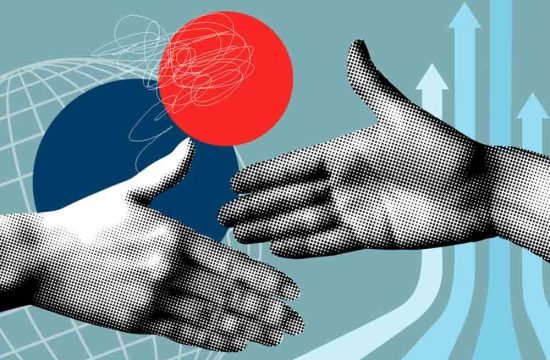MADISON — A new study from researchers at the University of Wisconsin–Madison shows why letting stereotypes inform our judgments of unfamiliar people can be such a hard habit to break.
Stereotypes are self-perpetuating in our minds, growing stronger with use just like information we actively try to cement in our memory.
“Think back to when you were in grade school learning your multiplication tables, and you would repeat and rehearse them in your mind — two times two is four, two times three is six, two times four is eight, and on and on,” says William Cox, a scientist at UW–Madison who studies prejudice. “Going through the world making assumptions about other people with stereotypes we’ve learned is another form of mental practice. With more rehearsal, those assumptions get stronger over time, even when we have no real evidence to back them up.”
In a series of studies published recently in the Journal of Experimental Social Psychology, Cox and his coauthors, UW-Madison alum and former Cox Lab manager Xizhou Xie and UW–Madison psychology professor Patricia Devine, put more than 1,000 people to work on a stereotyping task that involved reading social media profiles and deciding whether the men in the profiles were gay or straight.
The experiment’s participants were told “about half” the men were gay, but unbeknownst to study subjects, the researchers had created the profiles themselves. One group of made-up profiles was seeded with stereotypical gay interests (shopping), another with stereotypical straight interests (sports), and a third group carried solely neutral stereotype-irrelevant information.
After each of the first 20 answers — gay or straight — the profile readers got feedback that told them they were correct or incorrect, or they received no feedback at all. Then they read 10 more profiles split evenly between shopping- and sports-focused groups, while the researchers tracked the participants’ responses to see how the previous feedback affected their answers.
Participants answered in accordance with stereotypes about two-thirds of the time, “which is in line with previous research,” says Cox, who has also published research showing people’s judgment on gay stereotypes, their “gaydar,” doesn’t work. “What we wanted to know is how these people learned from the feedback (or lack of feedback) we gave them, stereotyping more or less over time.”
When the feedback mostly confirmed stereotypes, people learned from that confirmatory feedback and stereotyped more over time. People who got feedback that largely ran counter to stereotypes didn’t learn from that “disconfirmatory” feedback and continued stereotyping at the same rate despite the feedback saying that the stereotypes were inaccurate.
Distressingly, the people who received no feedback showed learning patterns like the people whose stereotypes were confirmed. They, too, tapped their stereotypes more often as they made the gay-or-straight decisions about strangers.
“They got no evidence at all beyond their own assumptions,” Cox says. “But it still led them to believe and use those stereotypes more over time. They’re ‘learning’ even from those untested assumptions.”
In a follow-up experiment, the researchers asked a group of nearly 300 people to tackle the profile task but gave them a random mix of feedback — stereotype-confirming, stereotype-disconfirming, or no information at all — after their answers. Then the participants were asked to repeat the process, but try to remember what the feedback was for each man. When they misremembered getting feedback where there actually had been none, they were more likely to say the feedback had matched stereotypes.
“For those answers when they had no evidence at all on whether their assumptions were correct, would they misremember us confirming their responses?” Cox says. “That’s what happened. They were much more likely to misremember that we had told them their assumptions about strangers were true, even when we didn’t tell them anything at all.”
For Cox, the results support the theories behind the neuroscience of learning and the stubbornness of learned stereotypes.
When an uncertain prediction is confirmed — like successfully guessing which number will come up on the next roll of a pair of dice — that confirmation activates reward processes in our brains. The result is a pleasant little chemical release, a reward that reinforces the value of the prediction. In Cox’s new studies, this neural reward process made stereotyping more appealing than accuracy — participants continued relying on stereotypes even when the feedback said that stereotypes were inaccurate.
“Our brains want our expectations to be supported. Because of that reward engagement, we can start becoming addicted, in a way, to stereotyping,” says Cox, whose work is supported by the National Institutes of Health.
“In addition to the reward signal we get when a stereotype is confirmed, our new study shows that it doesn’t even take confirmation — just the absence of evidence that tells us we’re wrong — to perpetuate stereotypes.”
Cox and Devine are also known for their bias habit-breaking training, which has been shown to successfully help people reduce the influence of their biases and make the changes stick over time. In this training, the researchers teach participants to recognize stereotypes and biases as they occur. The new findings will help them improve the training.
“This is something to watch out for,” Cox says. “You’re going to be making assumptions. And if you don’t catch them, they’re going to be reinforcing stereotypes in your mind. So, simply understanding that this happens is a really important way to counter stereotyping, to check those assumptions and not let them influence your judgment.”








